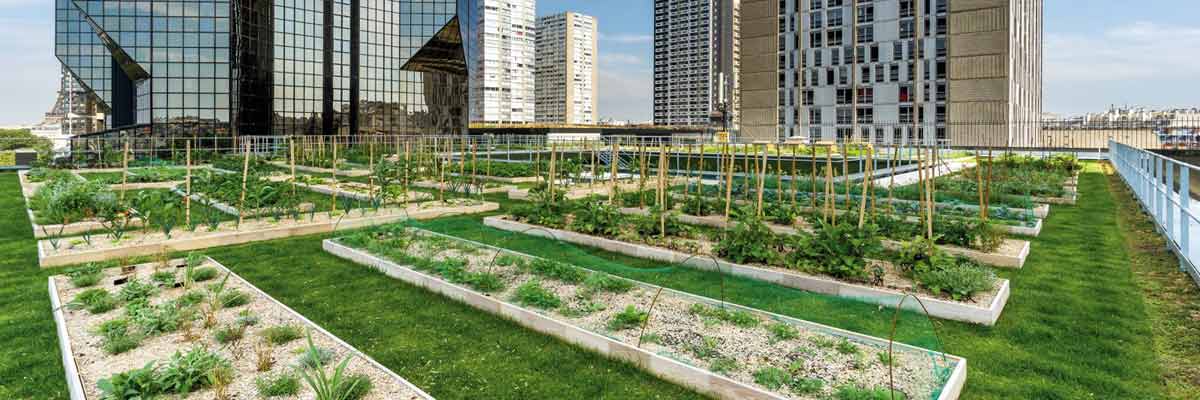Urban Farming, The New Way to Handle Unemployment?
Depending on which figures you choose to use, unemployment in America is approaching 20%, a figure that is quite remarkable. Fully 1/5 of the people in America who could be working are not currently working. I think urban farming could be this generation’s way to handle unemployment, sort of like a 2011 version of the CCC.
When you are willing to trade your labor for less space and less machinery you can create an amazing income from a small land base. SPIN farming is a method developed by a farming couple in Canada when they realized that they could make more money by growing intensively on less land if they grew the right crops at the right times.
They have a farm income calculator on their site that suggests that a farmer with 1/2 an acre can generate $24,000 in gross sales on the low end up to $72,000 on the high end. I think this is doable as well, but it does require a bit more marketing and growing of high value crops. We use a CSA model for our urban farm and I don’t think that will get us to those dollar figures because a CSA model is similar to a bulk food model vs. a model where you would grow exclusively high value crops like exotic green, radishes or beets for restaurants.
While the situation in Detroit is well known, the situation in other cities regarding vacant land is less well known. The Brookings Institute has placed the vacant land in Detroit at around 1/3 of the city area, of 40 sq miles. I saw a different article that put the vacant space in the average city at around 14%. It’s higher in the south (around 19%) and lower in the Northeast (around 9%), but 14% of the space still works out to a pretty good chunk of area. According to this article about Pittsburgh the size of the 10 largest cities in America is 340 sq miles, with Pittsburgh coming in at 56 sq miles.
Using those figures we can put the vacant land size at 5.6 sq miles in Pittsburgh or 34 sq miles for the average city in the Top 10 of America. (Stay with me on the math here people) So if you take the top 10 of our largest cities they would represent 21,760 acres of vacant space per city (640 acres per sq miles * 34 sq miles). That would work out to 210,760 acres across those 10 cities.
Now, let’s attack Pittsburgh. This article about Pittsburgh puts this city as the 56th largest city in America. (this ranking is based on population size not land area) I’m going to assume that the next 50 largest cities are all Pittsburgh’s size. (I know this is crazy but I have to make some assumptions to make this work) 56*10% =5.6 sq miles per city * 50 cities = 280 sq miles.
640 acres per miles * 280 sq miles = 179,200 acres.
So, between these two figures we have 389,960 acres of land. (Let’s make it 390,000 to make things easy) If you use the figures that SPIN farming provides that means we could potentially create 780,000 new jobs by encouraging urban farming on this vacant land.
The most recent figure I have seen on unemployment puts the total number at 13.7 million people. (I think is what the government calls unemployed which is not the number of people who are looking for job and quit, those who are no longer getting benefits and aren’t counted, and other factors). By turning the vacant land in these top 60 cities into urban farms we could lower the amount of unemployed in America by just under 6%, and would put the total number under 13 million.
A quick Google search puts the number of cities in America at around 25,000. I have discussed the top 60 size wise here. If we can assume for a minute that each one of those cities could support 1.5 sq miles of vacant then each city in America could, in theory, support 3 urban farms. 25,000*3 would be another 75,000 potential positions.
Now, I guess this wouldn’t completely take care of our unemployment problem given that it would “only” create around 860,000 new jobs. It’s interesting though that an initiative like this would make urban farming the 2nd largest employer in America after only the behemoth Wal-Mart. It’s interesting to think of all the job creation initiatives that are in place to help corporations create jobs and this one initiative could create the same amount of jobs as two new McDonald’s corporations.
That is a lot of jobs. And this just vacant land. It doesn’t include potential farmland in sprawling suburban campus’ or on rooftops in the city. I’m going to toss out that an initiative that included those elements would easily produce just as many jobs. Now you are looking at 1.8million jobs which would, by itself, lower unemployment by 13%, assuming that each farmer doesn’t ever hire any workers or that ancillary industries aren’t created off of this initiative.
Interesting though isn’t it?
This post cross posted at FatGuyonaLittleBike.







